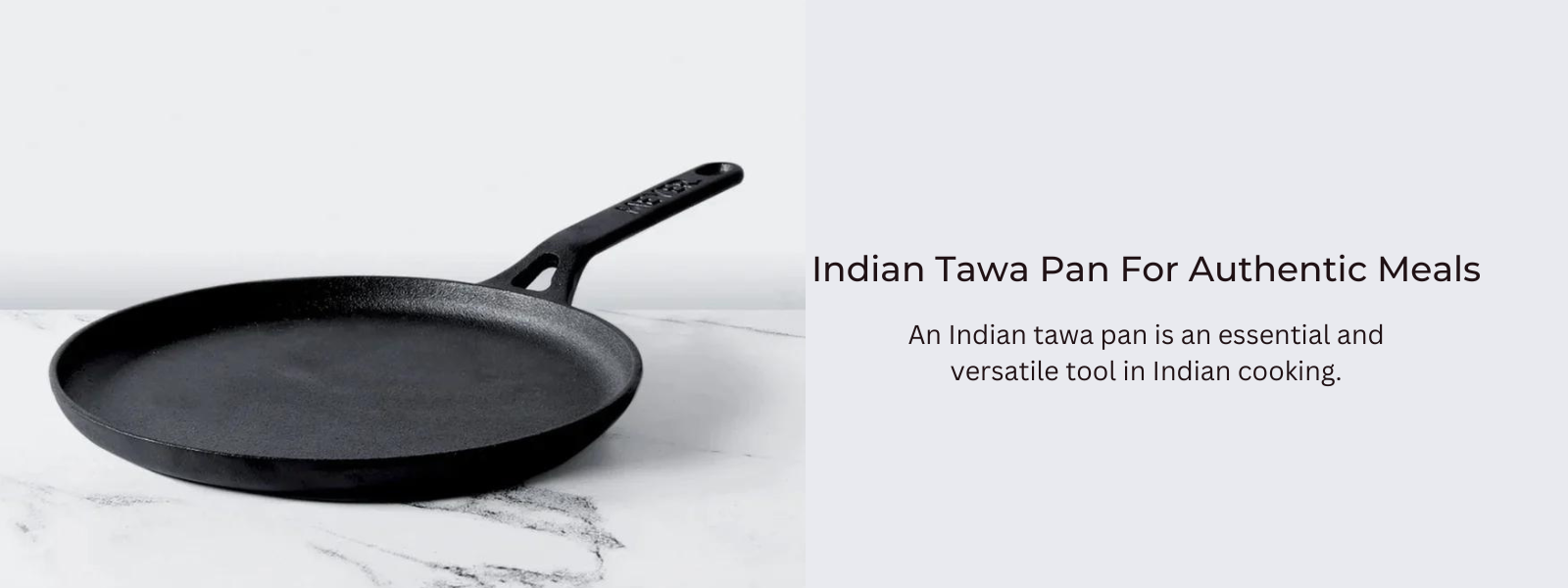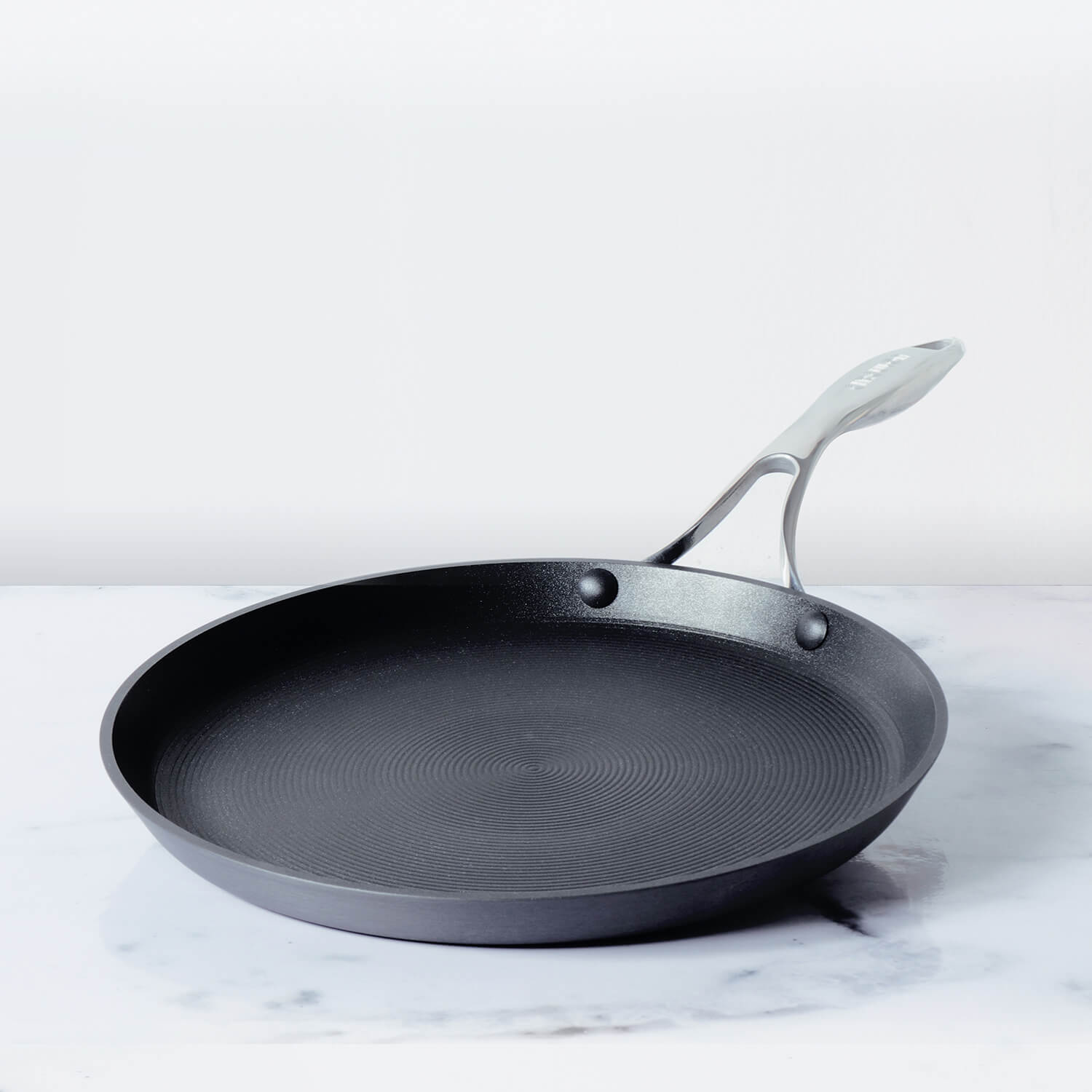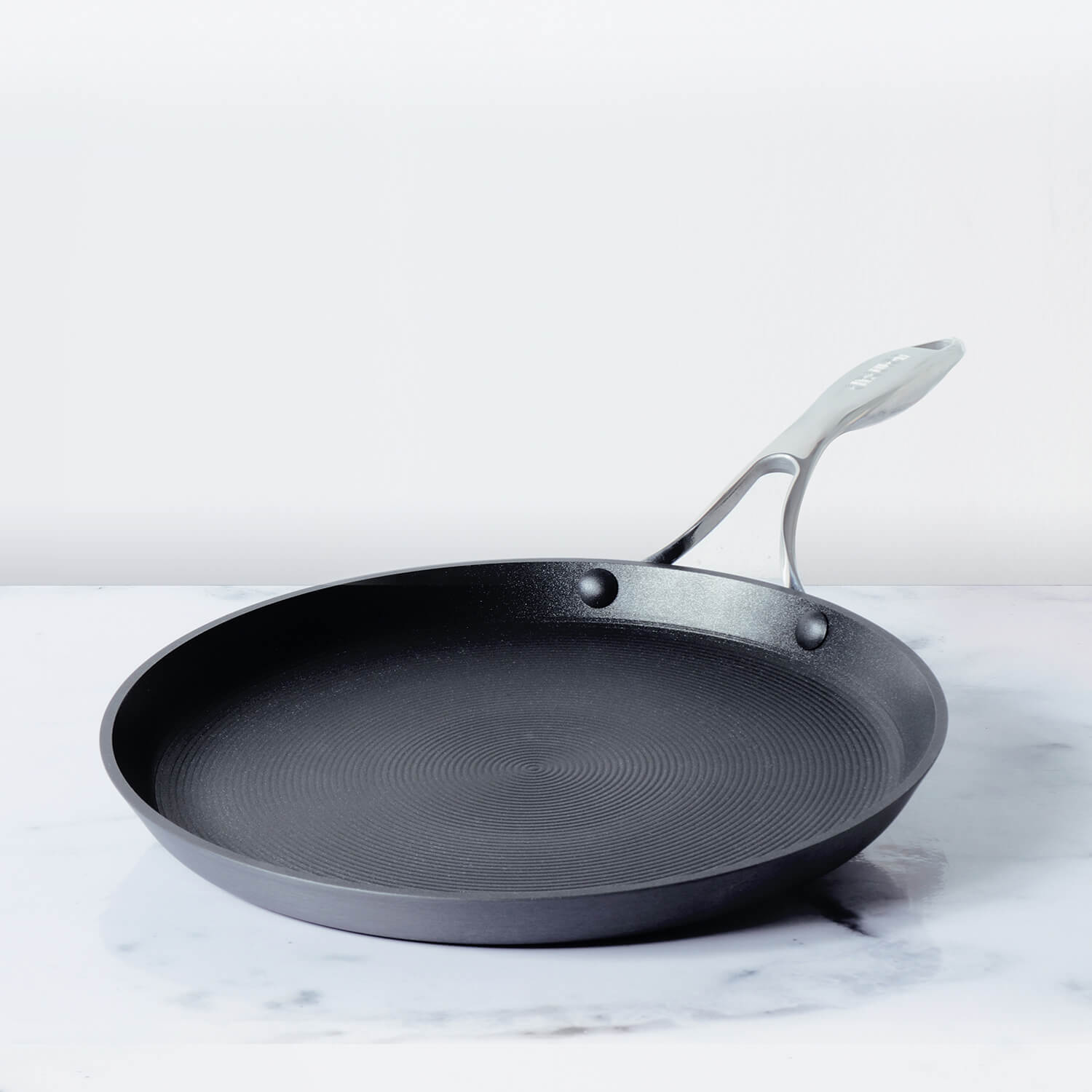A dosa non-stick pan is a specialized type of cookware designed for making dosas. The surface of the pan is non-stick, which makes it easier to flip the dosas and achieve the desired texture. It also helps prevent the dosas from adhering to the pan and tearing while they are cooking.
Table of Contents
Key Features of Dosa Non Stick Pan:
Here are some key points about dosa non-stick pans:
- Non-Stick Surface: The primary feature of a dosa non-stick pan is its smooth and non-stick cooking surface. This surface minimizes the need for excessive oil or ghee, which is typically used to prevent sticking in traditional pans.
- Shape and Size: Dosa pans are usually large and flat, with a wide cooking surface. The size of the pan can vary, but it's generally larger than a regular frying pan to accommodate the thin and large dosa crepes.
- Heat Distribution: Good dosa pans have even heat distribution to ensure that the dosas cook uniformly across the surface. Uneven heat distribution can result in unevenly cooked dosas.
- Material: Dosa pans are commonly made from materials like aluminum or hard-anodized aluminum. These materials are known for their lightweight nature and efficient heat conductivity. Some pans may have a stainless steel base or other materials for better durability.
- Handles: The pan usually comes with a long handle that helps in flipping and maneuvering the dosas during cooking. Some pans may have an additional handle on the opposite side for better stability.
- Maintenance: To maintain the non-stick surface and prolong the life of the pan, it's recommended to use wooden or silicone utensils to prevent scratching the coating. Avoid using metal utensils that could damage the non-stick layer.
- Cleaning: Cleaning a dosa non-stick pan is generally easy due to the non-stick coating. Use mild dish soap, a soft sponge, and warm water to clean the pan after use. Avoid using abrasive scrubbers that could damage the non-stick surface.
Difference Between Dosa Non Stick Pan & Regular Dosa Tawa:
Whether a dosa non-stick pan is better than a regular dosa pan depends on your preferences and cooking habits. Let's compare the two types:
Dosa Non-Stick Pan:
Advantages:
- Non-Stick Surface: The primary advantage of a non-stick dosa pan is that it makes cooking dosas easier. The non-stick surface reduces the need for excessive oil or ghee, and it prevents the dosas from sticking and tearing.
- Ease of Use: Non-stick pans are generally easier to work with, especially for those who are new to making dosas. The dosas slide off the pan more easily, and flipping them is less likely to result in breakage.
- Less Oil: Since the dosa won't stick, you can use less oil or ghee during cooking, making your dosas healthier.
- Easy Cleanup: Cleaning a non-stick pan is generally easier because food particles are less likely to stick to the surface.
Disadvantages:
- Durability: The non-stick coating can wear off over time, especially if not maintained properly. Scratches or overheating can damage the non-stick layer.
- Limited High Heat Use: Non-stick pans have a maximum recommended temperature, and subjecting them to very high heat can cause the non-stick coating to deteriorate.
Regular Dosa Pan:
Advantages:
- Traditional Cooking: If you prefer a more traditional cooking experience and are accustomed to using a regular dosa pan, you might prefer the authenticity and feel of cooking on a conventional pan.
- Durability: Regular dosa pans, especially those made from materials like cast iron, can be very durable and can last for generations with proper care.
- High Heat Tolerance: Regular pans, especially cast iron ones, can handle high heat without damaging the cooking surface.
Disadvantages:
- Sticking: Cooking dosas on a regular pan can be more challenging, as dosas are thin and delicate. Without a non-stick surface, there's a higher chance of dosas sticking to the pan and tearing.
- More Oil Required: You might need to use more oil or ghee to prevent dosas from sticking to a regular pan.
- Learning Curve: Cooking dosas on a regular pan can require more skill and practice, especially when it comes to flipping and preventing sticking.
In summary, a dosa non-stick pan can offer convenience and ease of use, especially for those who are new to making dosas or prefer using less oil. On the other hand, a regular dosa pan, like a cast iron one, can provide durability and a more traditional cooking experience, but it might require more skill and maintenance.
Is Dosa Non Stick Pan Good For No Oil Cooking?
Yes, that's correct. A dosa non-stick pan is designed to require less oil during cooking compared to a regular dosa pan. The non-stick surface of the pan prevents the dosa batter from sticking to the surface, which means you can use a minimal amount of oil or ghee to achieve the desired texture and prevent sticking.
When the dosa is done cooking, the non-stick coating on the pan allows it to be removed from the surface simply and cleanly, without leaving any major residue behind. Those individuals who are concerned about the amount of oil they consume and who choose techniques of healthier cooking may find this option to be very useful.
However, it's important to note that while a non-stick pan reduces the amount of oil needed, a small amount of oil or ghee is still recommended to enhance the flavor and texture of the dosa. Using too little oil might lead to a slightly different taste and texture compared to traditional dosas cooked with more oil. It's all about finding the right balance that suits your taste preferences while still benefiting from the non-stick properties of the pan.











Leave a comment